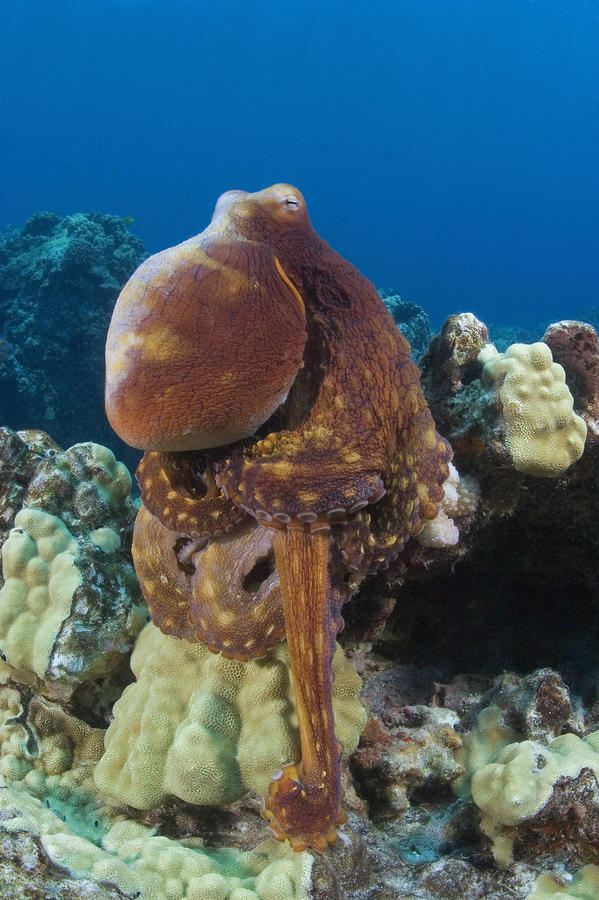Rich saw a large octopus today. When he saw it, it was sitting on top of a rock looking like a teddy bear. It was large, about 6-8 inches of body with tendrils wrapped around hidden. When Rich put attention on it, he slinked down into a crevice.
When I saw him, all I could see was this black blob with beautiful soulful eyes looking at me. I swam away and saw him slink up the rock very slowly.
It is pretty exciting to see an octopus. The first time I sawone he was sneaking from underneath coral to coral. He saw me trying to get a good look at him and made sure he completely disappeared under the coral. I got to see him swim, tentacles and all. He was pretty small, about 2 inches in the body

Aside from being tasty, the octopus, or he'e in Hawaiian, is possibly the most intelligent of all invertebrates (animals without backbones). He'e have large brains in comparison to their body size, image-forming eyes, a talent for problem solving, and a wide variety of defense mechanisms.
Octopuses all have a funnel, which aids in propulsion, eight arms surrounding a central mouth, three hearts, an ink sac, a hard beak and a toothed tongue. They have no bones or shells, so they are able to swim through very narrow crevices.
The most frequently seen octopus in Hawaii is the day octopus, or he'e mauli, probably because, as the common name might suggest, they are more active during the daytime and retreat into their lairs (holes in the reef) at night. Like many shallow water octopus, they generally live about a year. They have 8 arms with 1,920 muscular suction cups, which are used to cling to the rocks, move around the reef, and find food.
He'e mauli can display a wide variety of colors and textures on its head and arms, which may serve as camouflage as well as a mode of communication. Crabs are a favorite food of the he'e mauli, whose lairs are often identified by the presence of empty shells surrounding the entrance. The octopus can capture prey using its web, and may inject poisonous saliva to weaken or kill the animal. The he'e has a strong beak and radula (a toothy-tongue) to aid in opening up hard shells such as cowries and crabs.
We need to appreciate the beauty and wonder of these underwater masters of disguise and do our part to ensure their longevity for future generations to come.
Rich saw a red one at another time.



No comments:
Post a Comment